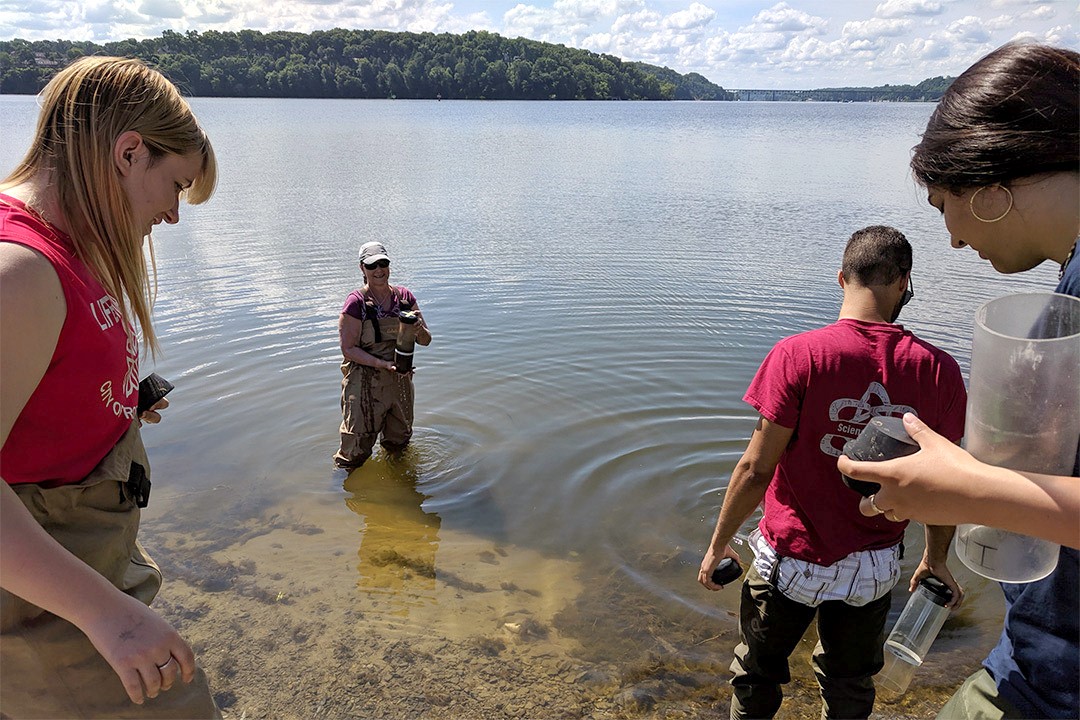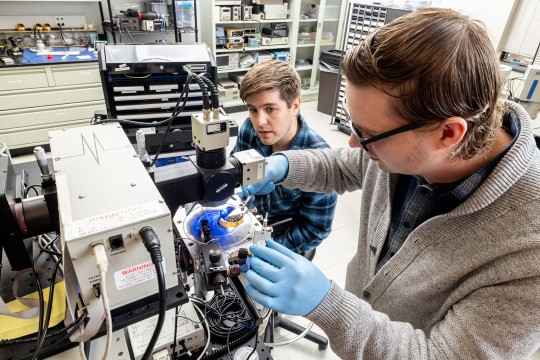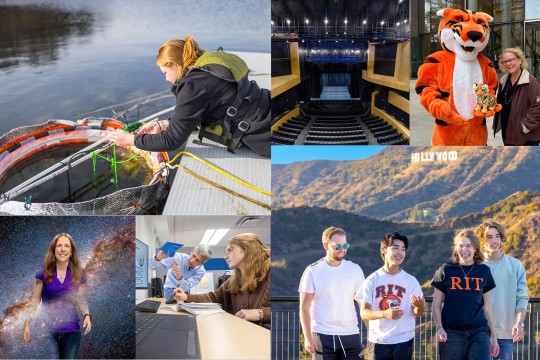RIT researchers receive grant to study microplastic pollution in Lake Ontario
An interdisciplinary team is studying how microplastics accumulate in the lake’s ecosystem
Matthew Hoffman
RIT researchers received funding to study the effects of microplastic pollution on Lake Ontario. RIT Associate Professor Christy Tyler, center, is pictured collecting sediment samples in Irondequoit Bay in 2019.
A team of Rochester Institute of Technology researchers will explore how tiny particles of plastic pollution are impacting Lake Ontario thanks to new funding from the National Oceanic and Atmospheric Administration’s Sea Grant College Program. The multidisciplinary group led by Associate Professor Christy Tyler will examine how microplastics are transported and transformed in the lake, where they ultimately end up and what effects they have on the ecosystem.
Scientists have much to learn about how plastic debris accumulates in bodies of water and impacts the environment. Most of the research to date has focused on oceans or the surface of lakes. While plastic has been found to accumulate in floating patches in oceans, models by RIT Associate Professor Matthew Hoffman show that in lakes, plastic is more likely to accumulate in the sediment at the bottom of lakes—the benthic zone. Tyler and her team will use mathematical modeling, field surveys, fluid dynamics, genomic sequencing and other experiments to look at how plastic is impacting the benthic zone and how wildlife and natural processes are transporting and further breaking down plastic.
“We want to get a better idea of the complete lifecycle of plastic once it hits the water,” said Tyler, an associate professor at RIT’s Thomas H. Gosnell School of Life Sciences and the principal investigator of the project. “And we don’t look at plastic as a single type of material—different types can vary substantially in their transport, toxicity and persistence in the environment.”
Tyler’s co-PIs include Steven Day, head of RIT’s Department of Biomedical Engineering; Nathan Eddingsaas, associate professor in the School of Chemistry and Materials Science; Hoffman, associate professor in the School of Mathematical Sciences; and André Hudson, head of the Thomas H. Gosnell School of Life Sciences. The grant will also provide funding for several undergraduate and graduate students to help conduct research.
Some of the plastics they plan to study include construction materials such as PVC, clothing fibers like polyester and packaging materials including polyethylene. The ultimate goal is to effectively inform policy, mitigation, prevention initiatives, resource management strategies and technical innovations to combat microplastic pollution.
This story is a product resulting from project R/CTP-55 funded under award NA18OAR4170096 from the National Sea Grant College Program of the U.S. Department of Commerce’s National Oceanic and Atmospheric Administration, to the Research Foundation for State University of New York on behalf of New York Sea Grant. The statements, findings, conclusions, views and recommendations are those of the author(s) and do not necessarily reflect the views of any of those organizations.






